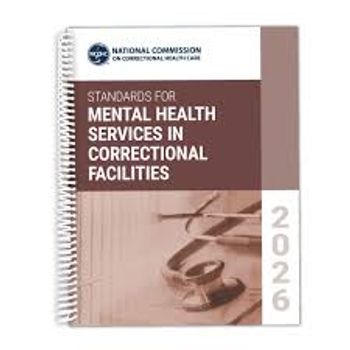
On Massacres, "Slaughterfest," and the Goldwater Rule
Media coverage of murderous rampages comprises a grisly-and vastly profitable-reality show. I’ll call it a Slaughterfest. Why do therapists continue to take part in this offensive entertainment?
A new patient in a state of high agita pleads – “Doctor, you must help me! I’m tormented by a nameless fear!!”
“Please don’t worry, sir,” replies the psychiatrist soothingly. “We have a name for everything.”
The perpetrator of the recent shootings in Isla Vista, California, had been diagnosed with just about everything from the DSM, the ICD, and the FBI – Asperger syndrome, paranoid schizophrenia, narcissistic personality disorder, rampant sociopathy. . .. These wildly disparate assessments have been rendered by mental health professionals with qualifications ranging from credible to risible.
Those mental health professionals who made their pronouncements via the media all have one thing in common – they seriously violated the so-called “Goldwater rule.”
In 1964, a majority of psychiatrists (just how many isn’t certain) in a straw poll declared that Barry Goldwater was psychologically unfit for presidential office. Of course he was eminently sane. Psychiatrists of a liberal persuasion just abhorred his politics.
The utterly inappropriate statement about the wretched condition of Goldwater’s psyche, coming on the heels of other questionable opinions about public figures, prompted the American Psychiatric Association’s Ethics Committee to establish guidelines about statements to the media about the mental status of the famous, the infamous, or Joe the Plumber. Essentially one was supposed to give an assessment or diagnosis regarding someone in the public eye only if a professional relationship existed, and then only with informed consent.
The Goldwater directive obtains today. It is a “rule” only in the vernacular sense, not an edict mandating punishment for its infraction. It wasn’t meant to apply to analytic study of past personalities (eg, Eric Erickson’s magisterial studies of Luther and Gandhi), or profiling murderers on the loose. It carries moral rather than legal valence, implicitly restraining speculation about anyone in the limelight – a government official, celebrity, or perpetrator of a heinous crime.
Psychiatrists and other mental health professionals followed the Goldwater guidelines over the next 4 decades with rare exceptions-those usually found in “Boy Eats Other Foot” supermarket tabloids.
Unfortunately, ad hominem diagnoses have now become the rule. The escalation of public mayhem – at the Aurora multiplex, the Sandy Hook school, the Fort Hood PTSD center – has been paralleled by a garbage tide of unseemly jabber by therapists in the media. The Isla Vista massacre has provoked a notable plethora of such chatter, arguably sparked by the shooter’s interminable manifestos on Youtube and Facebook, as well as revelations about longstanding psychological problems.
By now, media coverage of these rampages comprises a grisly-and vastly profitable-reality show.
I’ll call it a Slaughterfest.
The typical Slaughterfest mingles searing pathos with saccharine bathos-between commercials. It commences with harrowing on-scene coverage of the catastrophe, accompanied by lurid descriptions by survivors, cops, and bystanders. This is followed over several days by interviews with the victims’ (less often, the perpetrator’s) relatives and acquaintances; shots of photographs, bouquets, and placards deposited at the murder site; funeral services in which a clergyman (or clergywoman) offers what comfort can be given to the stunned bereaved, and tries to wrestle whatever sense which can be made about the tragedy’s inherent senselessness. Tearful witness is duly borne to the victims’ virtues and-if young enough-their potential, lost forever.
As events unfold, one or more therapists are routinely roused to dissect the perp’s persona. Their appearance rarely lasts more than a few minutes. The nature or quality of their analysis doesn’t matter a penny. It’s just another set piece of the Slaughterfest.
Why do therapists continue to take part in this offensive entertainment? Aside from grossly violating the Goldwater guidelines, their comments are consistently shallow, if only because of brevity. Differing interpretations and diagnoses abound, doing no honor to our profession, while underscoring just how very little is really known about men who commit these outrages.
I am also concerned that even a therapist’s valid comment may inadvertently contribute to the stigmatization of mental illness. Belief that a psychiatric disorder sui generis carries violent potential still-and none too subtly-informs the talking head blather, despite the sanctimonious call for early identification and treatment. (I’ve said before that even with improved psychiatric services, most perpetrators will still stay well beneath the radar.)
Andy Warhol predicted that in the future everyone will be famous for 15 minutes. I think that most therapists on network Slaughterfests mean well, and hope to provide a reasoned explanation to a terrified public. But few, no matter how noble their intentions, are immune to the heady promise of celebrity for a fleeting fraction of Warhol’s 15 minutes.
And the media’s siren song can be incredibly seductive. To lure you on camera, network reps will stroke your narcissism to a high gloss, laud your achievements, deem your contribution invaluable. They also want you to drop everything, patients included, and show up in the Green Room yesterday. After your stint, they can discard you like a banana peel.
Isla Vista bloodbaths are occurring so frequently that they seem to be feeding on themselves, acquiring a frightening momentum. By now, a sinister cybernetic
is well entrenched, a vicious cycling between the public massacre, the media Slaughterfest, and millions of mesmerized viewers.
The reasons why mega-audiences continue to devour the latest cavalcade of carnage are too many and complex to explore at length. I’ll only nominate the need to obtain mastery over the horrific event; the innate appetite for spectacles of any sort- and on the darkest end of the spectrum-that perverse delight in the suffering of others the Germans call Schadenfreude.
The vicious cycling is unlikely to end soon – but mental health professionals do have a choice about joining it. Many perpetrators of communal butchery dearly yearn for an audience to their resentments, if only posthumously (the Isla Vista killer left the largest verbiage record yet on internet social media).
Denying these miscreants a bully-pulpit from which to vent their spleen certainly won’t halt the slaughter altogether. Yet it would be worthwhile if even if one potential mass killer backs away from heinous deeds because no one is out there to hear him.
We cannot expect the media to cease and desist. The Slaughterfest simply generates too much cash. But we do not have to participate in it. The Goldwater directive provides useful guidelines for a quote or appearance in other circumstances. But our most potent response to an invitation to join the unholy festivity is to refuse it.
Paraphrasing Wittgenstein’s famous epigram on the limits of knowledge:
“Whereof one should not speak, one must remain silent.”
Newsletter
Receive trusted psychiatric news, expert analysis, and clinical insights — subscribe today to support your practice and your patients.




